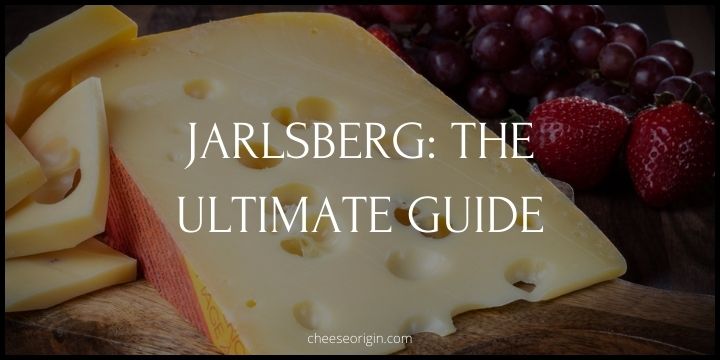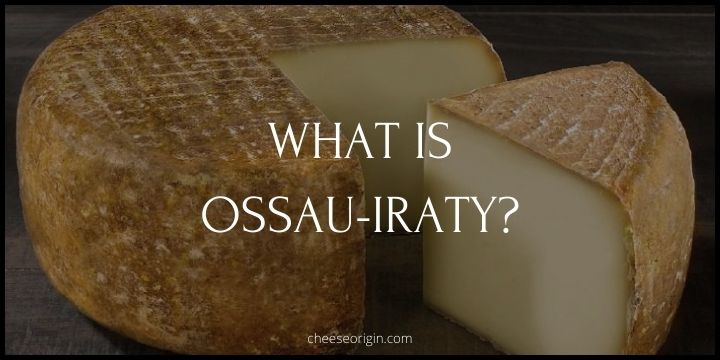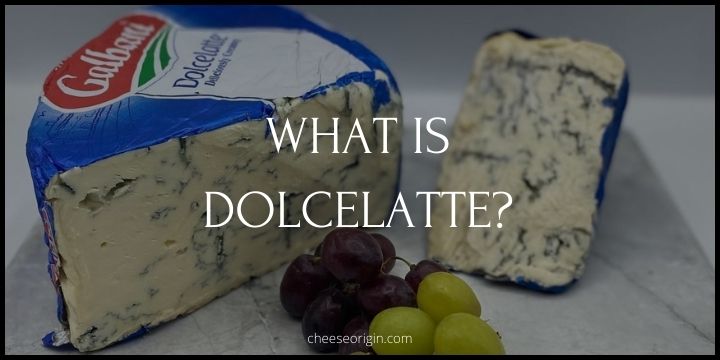What is Quark Cheese? A Hidden Dairy Gem
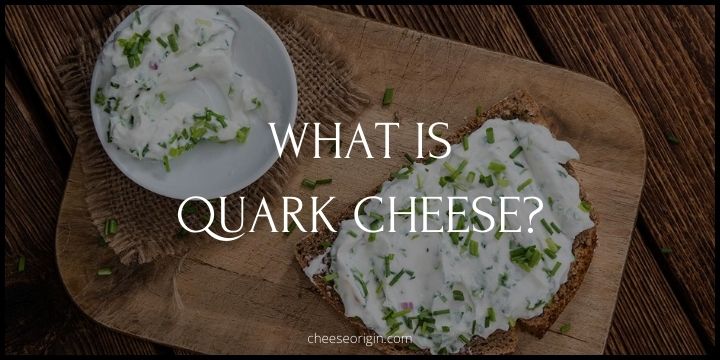
Welcome to the fascinating world of dairy delights, where we’re about to uncover a lesser-known but utterly delectable gem – Quark cheese. It’s a name that you might not hear often, especially if you’re not from Germany or Eastern Europe, but this humble dairy product deserves a spotlight of its own. In a realm dominated by the likes of Cheddar, Brie, and Mozzarella, Quark cheese quietly stands its ground, offering a creamy, tangy, and healthful alternative.
But what exactly is Quark cheese? Is it a cheese? A yogurt? Or something in between? If you’re intrigued by these questions, you’ve arrived at the right place. This post will delve into the captivating journey of Quark cheese, from its historical roots to its modern culinary applications.
Quick Facts About Quark Cheese
| Quick Facts | Details |
|---|---|
| Origin | Predominantly produced in Germany, but also found in other parts of Europe |
| Type | Fresh cheese |
| Texture | Creamy and smooth, similar to sour cream or Greek yogurt |
| Taste | Mild and slightly tangy |
| Color | White |
| Fat content | Can vary, but typically ranges from low-fat to full-fat |
| Protein content | High in protein, often comparable to Greek yogurt |
| Uses | Versatile; can be used in both sweet and savory dishes, baking, spreads, and dips |
| Nutrition | Rich in calcium, vitamin A, and probiotics |
| Availability | Widely available in Europe, but is harder to find in the US |
What is Quark Cheese?
Quark cheese is a fascinating dairy product that has its roots deep in European culinary tradition. Predominantly produced in Germany, it’s also found in other parts of Europe, making it a staple in many kitchens across the continent. Despite its popularity abroad, quark cheese remains something of a hidden treasure in the United States, where it’s less commonly found.
So, what exactly is quark cheese? This fresh cheese is known for its creamy and smooth texture, which is similar to that of sour cream or Greek yogurt. It’s this delightful consistency that makes quark cheese so versatile, capable of being used in both sweet and savory dishes, as well as in baking, spreads, and dips.
The taste of quark cheese is equally appealing. Its flavor profile is mild and slightly tangy, making it an excellent complement to a variety of ingredients. The color of quark cheese is a clean white, which adds to its visual appeal when used in cooking or served on a cheese board.
From a nutritional perspective, quark cheese is a standout. Depending on the variety, it can range from low-fat to full-fat. Despite this, it boasts a high protein content, often comparable to Greek yogurt. Furthermore, it’s rich in calcium, vitamin A, and probiotics, making it a healthy addition to any diet.
What Does Quark Cheese Taste Like?

Quark cheese has a mild and slightly tangy taste, which is often compared to a blend of cottage cheese and sour cream. Unlike many cheeses, quark is not aged or ripened, so it doesn’t develop a strong or pungent flavor. Instead, its taste is subtle and versatile, making it suitable for both sweet and savory dishes.
In terms of texture, quark is smooth and creamy, similar to Greek yogurt or sour cream. This contributes to its overall taste experience, as it spreads easily and blends well with other ingredients. Some varieties of quark are also whipped before packaging, which makes them even lighter and fluffier.
Overall, the taste of quark cheese is refreshing and satisfying, offering a unique alternative to more familiar dairy products.
Quark Cheese Tasting Notes
- Appearance: Quark cheese is white in color, showcasing a creamy and smooth consistency.
- Aroma: It emits a mild, fresh dairy scent, reminiscent of Greek yogurt or sour cream.
- Taste: The flavor is mild and slightly tangy, akin to a blend of cottage cheese and sour cream.
- Texture: Its texture is smooth and creamy, much like Greek yogurt or sour cream. Some varieties are even whipped before packaging, lending them a lighter, fluffier consistency.
- Aftertaste: Following consumption, quark cheese leaves a clean and refreshing finish, with a light tanginess lingering on the palate.
- Pairings: Quark cheese is quite versatile when it comes to pairing. It complements well with fresh fruits and honey for a sweet dish, or with herbs, garlic, and spices for savory applications. It can also be incorporated into baking recipes, used as a spread on bread, or featured in dips.
What is the Difference Between Quark Cheese, Cottage Cheese, & Cream Cheese
| Quark Cheese | Cottage Cheese | Cream Cheese | |
|---|---|---|---|
| Origin | Originated in Europe, particularly popular in Germany | Developed in England, now popular worldwide | Originated in the United States |
| Texture | Smooth and creamy, can be whipped to be fluffy | Chunky and lumpy with visible curds | Smooth and spreadable, often used in baking |
| Taste | Mild and slightly tangy | Mild, but can be slightly sour | Mild, sweet, and slightly tangy |
| Fat Content | Low fat, ranges from virtually fat-free to full-fat varieties | Available in full-fat, low-fat, and fat-free varieties | High in fat, typically around 33% |
| Uses | Versatile; can be used in both sweet and savory dishes, spreads, baking | Commonly eaten as is or added to salads, granola, or fruit | Often used in spreads, dips, and baking, especially cheesecakes |
The 7 Best Quark Cheese Substitutes
| Quark Cheese Substitute | Reason for Substitution |
|---|---|
| Cream Cheese | Cream cheese has a similar smooth texture and mild flavor to quark, making it a great substitute in both sweet and savory recipes |
| Fromage Frais | This is a French cheese with a creamy texture and tangy flavor. It’s a good alternative for quark in recipes that require a slightly sour taste |
| Fresh Ricotta | Ricotta is another cheese with a similar texture to quark. However, it has a slightly sweeter flavor, making it a good substitute in dessert recipes |
| Greek Yogurt | Greek yogurt is thicker and creamier than regular yogurt, similar to quark. It can be used as a healthier substitute in many dishes due to its high protein content |
| Mascarpone Cheese | Mascarpone is an Italian cheese that is creamy and rich, similar to quark. It’s a good substitute in recipes that require a richer, creamier texture |
| Cottage Cheese | Cottage cheese can be used as a substitute for quark in certain recipes. It has a lumpy texture but a similar mild flavor |
| Sour Cream | Sour cream has a similar tangy flavor to quark and can be used as a substitute, especially in recipes that call for a dollop of quark |
What Pairs Well With Quark Cheese?
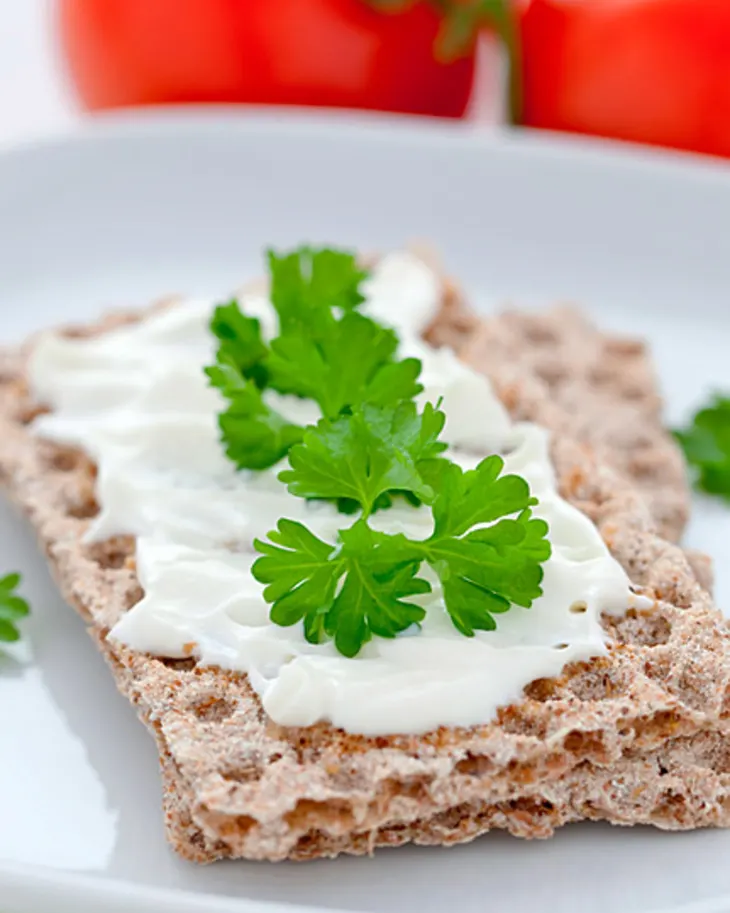
Food that goes well with Quark Cheese:
| Category | Food that Goes Well with Quark Cheese |
|---|---|
| Bread and Crackers | Toast, Bagels, Crackers |
| Fruits | Mango, Strawberries |
| Desserts | Cheesecake (Lemon, Blueberry & Lime, Baileys, Strawberry, Orange) |
| Salads | Quark Cheese Salad |
| Appetizers | Quark Cheese Fritters, Quark Cheese Balls |
| Main Dishes | Rich Pasta Dishes, German Fluted Quark Tartlet |
| Side Dishes | Dollop over Potatoes |
| Snacks | Use as a spread for sandwiches |
Also read: 11 Best Crackers that Pair Well with Cheese
Beverage that goes well with Quark Cheese:
| Category | Beverages that Go Well with Quark Cheese |
|---|---|
| Wine | White wines like Sauvignon Blanc, Chardonnay, or a light-bodied Pinot Noir |
| Beer | Wheat beers, Pilsners, or light Lagers |
| Non-Alcoholic | Herbal teas, Apple cider, Fresh fruit juices (like apple, pear, or grape) |
| Spirits | Vodka, Gin, or Light-bodied Whiskey |
| Coffee and Tea | Black tea, Green tea, Espresso, Cappuccino |
Also read: Best Wine and Cheese Pairings: The Ultimate Guide
The History of Quark Cheese
Quark cheese, also known as quarg, is a creamy, vegetarian, fresh dairy product that has its roots firmly planted in German-speaking and Eastern European countries. Its invention dates back to the 1920s and is described as a hybrid between yogurt and cream cheese. Despite being technically classified as a cottage cheese, its taste and texture are closer to yogurt, making it one of Germany’s, and perhaps even the world’s, best-kept secrets.
The use of quark can be traced back as far as the 14th century, suggesting its integral place in culinary history. In Roman times, the historian Tacitus noted that Germanic people consumed a similar type of cheese, further emphasizing its long-standing presence.
Interestingly, the Russian form of quark found its way to Israel during the Aliyah of the 1990s, brought by immigrants from the former Soviet Union. In Israel, it became known under the name tvorog, highlighting the cultural exchanges and adaptations that food undergoes as it travels across borders and through time.
While quark cheese’s popularity has remained consistent in its native regions, it has also gained international recognition over the years. The cheese’s creamy texture and mild flavor have made it a versatile ingredient in various dishes, from desserts to main courses, contributing to its global appeal.
Notably, World Quark Day is celebrated to acknowledge the significance of this delectable dairy product. This day not only commemorates the history of quark cheese but also promotes its nutritious benefits and versatile uses in cooking.
Looking ahead, the trajectory of quark cheese seems promising. As more individuals seek healthier alternatives to traditional dairy products, the demand for quark cheese is likely to increase. Its high protein content and lower fat percentage compared to other cheeses make it an attractive option for health-conscious consumers.
Moreover, as global cuisines continue to intersect and influence each other, quark cheese’s potential for new flavor profiles and culinary applications is vast. Its future in the culinary world seems bright, with possibilities of more innovative uses in both savory and sweet dishes.
In conclusion, the journey of quark cheese from its humble beginnings in Eastern Europe to its current global recognition is a testament to its unique characteristics and versatility. As it continues to inspire chefs and delight food lovers around the world, the story of quark cheese is far from over.
Frequently Asked Questions
1. Can you eat Quark without cooking?
Yes, you can absolutely eat Quark without cooking. Similar to cottage cheese or yogurt, Quark can be eaten straight, used as a spread for toast, bagels, and sandwiches, or used as a base for dips or sandwich fillings. It’s also enjoyable with fruit or on its own. Although Quark can be heated and used in various recipes, it is not a requirement.
2. How to store Quark cheese?
- Refrigerate: Keep your Quark cheese in the refrigerator at a temperature between 35°F and 40°F (2°C and 4°C). It should be stored in its original container, which is typically air-tight and suitable for refrigeration.
- Seal Well: If you’ve opened the package and have some leftovers, make sure you seal it tightly before putting it back in the fridge. You can use plastic wrap or a storage container with a tight-fitting lid.
- Use-By Date: Pay attention to the use-by date on the package. Quark cheese is a fresh cheese, so it has a shorter shelf life than aged cheeses. Typically, it should be consumed within a week of opening, but always refer to the use-by date or consume it as soon as possible to ensure it’s fresh.
- Freezing: While not ideal due to potential texture changes, Quark cheese can be frozen if necessary. To do this, place the cheese in an airtight container or heavy-duty freezer bag and freeze. After thawing, stir well to restore its creamy consistency.
Also read:
- What is Robiola? A Taste of Piedmont, Italy
- What is Brie de Melun? An Ancestor of All Bries
- What is Cooper Sharp Cheese? A Taste of Tradition
- What is Pepper Jack Cheese? The Spicy Star of American Dairy
- What is Gouda? The Golden Glory of Dutch Cheese
- Emmental: A Comprehensive Guide to Switzerland’s Cheese Haven
- What is Oaxaca Cheese? A Staple in Mexican Cuisine
